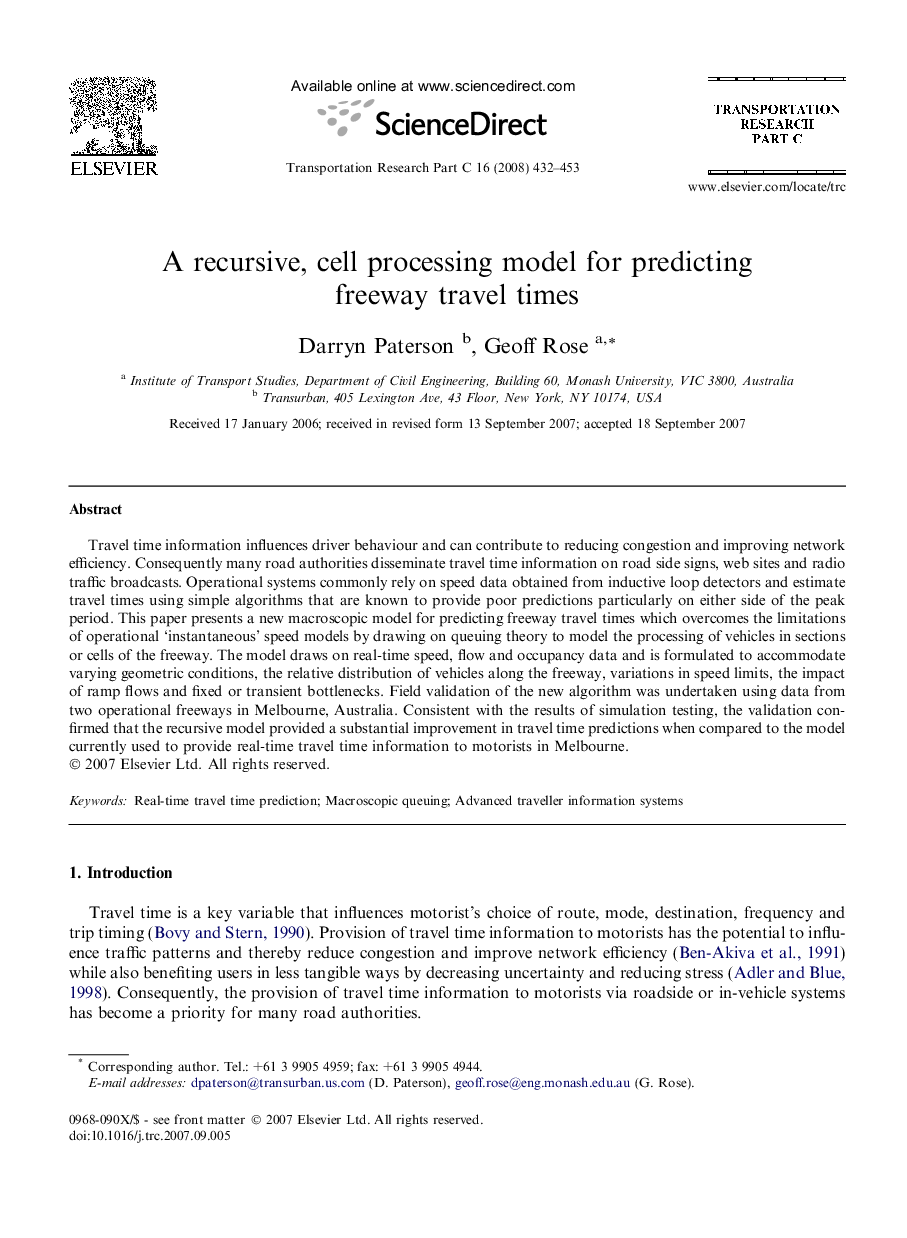| Article ID | Journal | Published Year | Pages | File Type |
|---|---|---|---|---|
| 525307 | Transportation Research Part C: Emerging Technologies | 2008 | 22 Pages |
Travel time information influences driver behaviour and can contribute to reducing congestion and improving network efficiency. Consequently many road authorities disseminate travel time information on road side signs, web sites and radio traffic broadcasts. Operational systems commonly rely on speed data obtained from inductive loop detectors and estimate travel times using simple algorithms that are known to provide poor predictions particularly on either side of the peak period. This paper presents a new macroscopic model for predicting freeway travel times which overcomes the limitations of operational ‘instantaneous’ speed models by drawing on queuing theory to model the processing of vehicles in sections or cells of the freeway. The model draws on real-time speed, flow and occupancy data and is formulated to accommodate varying geometric conditions, the relative distribution of vehicles along the freeway, variations in speed limits, the impact of ramp flows and fixed or transient bottlenecks. Field validation of the new algorithm was undertaken using data from two operational freeways in Melbourne, Australia. Consistent with the results of simulation testing, the validation confirmed that the recursive model provided a substantial improvement in travel time predictions when compared to the model currently used to provide real-time travel time information to motorists in Melbourne.
